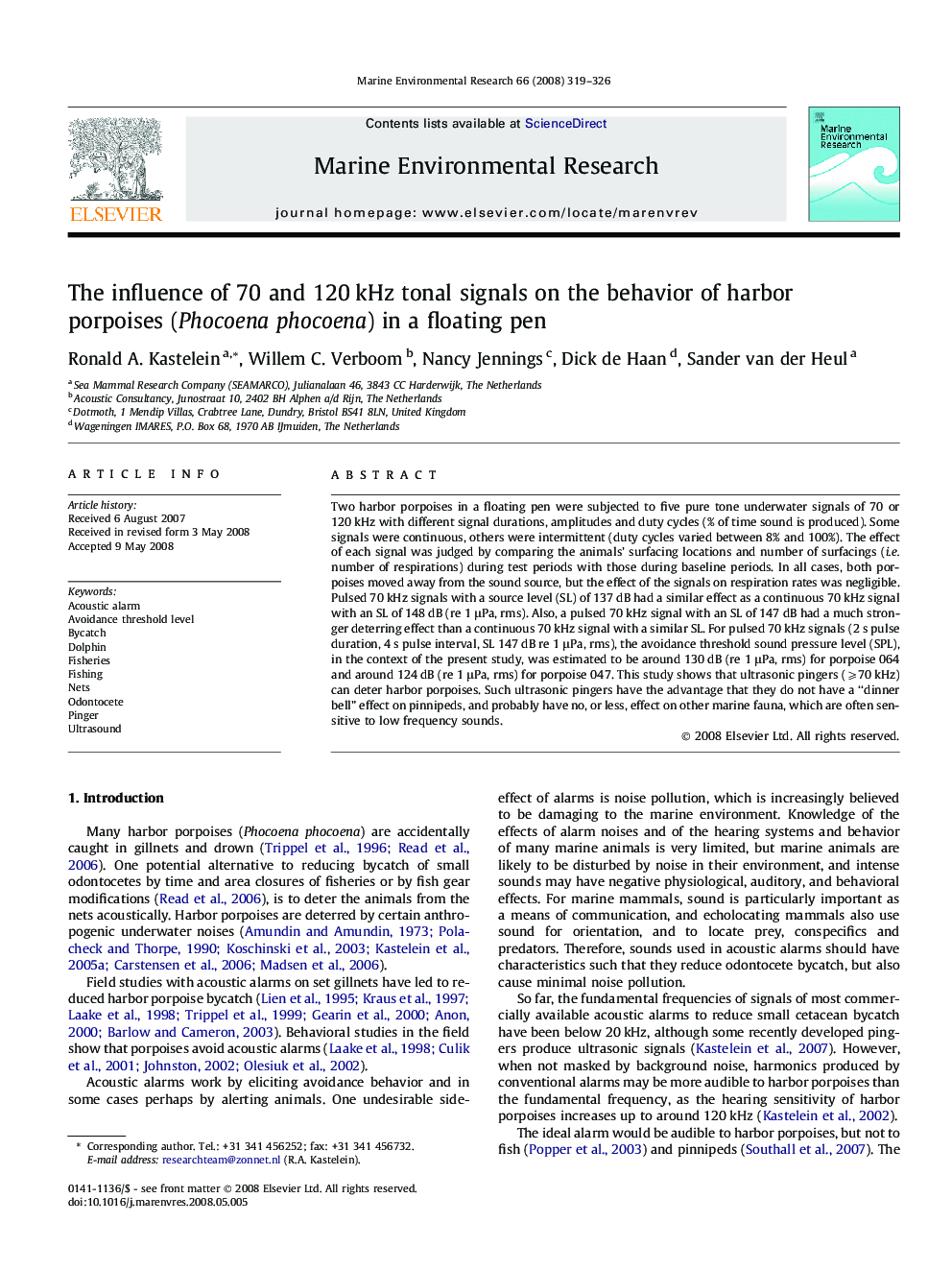| کد مقاله | کد نشریه | سال انتشار | مقاله انگلیسی | نسخه تمام متن |
|---|---|---|---|---|
| 4551348 | 1328291 | 2008 | 8 صفحه PDF | دانلود رایگان |

Two harbor porpoises in a floating pen were subjected to five pure tone underwater signals of 70 or 120 kHz with different signal durations, amplitudes and duty cycles (% of time sound is produced). Some signals were continuous, others were intermittent (duty cycles varied between 8% and 100%). The effect of each signal was judged by comparing the animals’ surfacing locations and number of surfacings (i.e. number of respirations) during test periods with those during baseline periods. In all cases, both porpoises moved away from the sound source, but the effect of the signals on respiration rates was negligible. Pulsed 70 kHz signals with a source level (SL) of 137 dB had a similar effect as a continuous 70 kHz signal with an SL of 148 dB (re 1 μPa, rms). Also, a pulsed 70 kHz signal with an SL of 147 dB had a much stronger deterring effect than a continuous 70 kHz signal with a similar SL. For pulsed 70 kHz signals (2 s pulse duration, 4 s pulse interval, SL 147 dB re 1 μPa, rms), the avoidance threshold sound pressure level (SPL), in the context of the present study, was estimated to be around 130 dB (re 1 μPa, rms) for porpoise 064 and around 124 dB (re 1 μPa, rms) for porpoise 047. This study shows that ultrasonic pingers (⩾70 kHz) can deter harbor porpoises. Such ultrasonic pingers have the advantage that they do not have a “dinner bell” effect on pinnipeds, and probably have no, or less, effect on other marine fauna, which are often sensitive to low frequency sounds.
Journal: Marine Environmental Research - Volume 66, Issue 3, September 2008, Pages 319–326